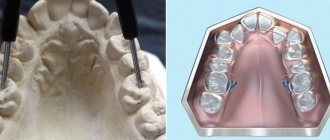Andrey Ushakov
Director of the Marketing Management Department of the L-Wine wine project.
Wine is like art. There is a lot of subjective stuff in it, and the last argument for or against will always be “like/dislike.” But there are also objective parameters for assessing the quality of a noble drink. If you are confused by the smell of wine or an unusual taste, then it is quite possible that you have come across a defective sample. There are several life hacks that can help you recognize flaws in wine from the first sip. We tell you how to diagnose a bottle and insure yourself against purchasing a spoiled drink in the future, even if you are new to the wine world.
"Cork disease"
Symptoms: The wine has an unpleasant, pungent odor, reminiscent of wet cardboard or dog hair. If you smell “dog” or “damp cellar”, these are not the rich nuances of the original complex wine. Don't you think the wine is sick?
What to do
Pour the wine down the sink - alas, it cannot be saved. Between 1% and 7% of all cork-corked wine in the world is contaminated with “Cork taint” responsible compounds. Determination of haloanisoles and halophenols in cork matrix: A review of specific “cork” bacteria. If you don’t want to participate in the lottery, buy wine with a screw cap, there is simply nowhere for such bacteria to come from.
Aldehydes and esters in wine
Formed during the oxidation of alcohols. The total amount of aldehydes in wine is 15-200 mg/l. Of the 9 aliphatic (series C1-C8) and 5 aromatic aldehydes, 90% by weight is acetaldehyde (acetic aldehyde). In wines such as sherry, formed by yeast oxidation of ethyl alcohol, the acetaldehyde content can reach up to 600 mg/l or more.
Higher aliphatic aldehydes give the characteristic tone to Tokaji wines. For most wines, especially champagne and table wines, acetaldehyde is undesirable: it imparts a harsh aroma, and when overoxidized to acetic acid, it gives an unpleasant “scratching” taste. At the same time, acetaldehyde, during directed aging of wines, participates in the formation of the bouquet of sherry and Madeira.
Aromatic aldehydes (vanillin, lilac, etc.) are products of the hydrolytic decomposition of oak stave lignin during aging of wines and cognacs. Phenylacetaldehyde is formed from the oxidation of phenylethanol. Aromatic aldehydes have a very strong fruity tone. A hint of vanilla is characteristic of old Madeiras, as well as cognacs.
Furan aldehydes (furfural, hydroxymethylfurfural and methylfurfural) accumulate in amounts up to 35 mg/l in dessert and liqueur wines from high-sugar dried grapes.
In malaga and marsala, due to the addition of wort concentrated at elevated temperatures (cotto, aroppe, bekmes, etc.), the content of hydroxymethylfurfural reaches 100 mg/l and higher. The main source of furan aldehydes, which give wines specific “low” boiled tones, are pentoses and hexoses of grapes.
Aldehydes are highly reactive: they combine with sulfurous acid and its acid salts, which is what the bisulfite method of quantitative determination of aldehydes is based on; are reduced to alcohols; oxidize to acids; easily react with alcohols, forming ethers - acetals; when aging wines, they bind to phenolic substances, precipitating; when interacting with nitrogenous substances, they form colored products - melanoidins.
Ketones. Grapes and wine contain 19 ketones up to 50 mg/l. For example, acetoin, acetone, diacetyl,
γ-butyrolactone, ionone. Ketones are chemically inactive, but have characteristic odors and thereby affect the organoleptic qualities of wine. Thus, α- and β-ionones have a violet aroma, which is inherent in red table wines from the Cabernet Sauvignon variety; diacetyl gives dry wines and champagne “tones of oxidation”; acetoin and acetone derivatives - unpleasant extraneous tones; γ-butyrolactone is formed during fermentation and has an oily odor.
Ethers.
Esters are characterized by the greatest diversity among the aromatic substances of wines. This is due to the large number of possible combinations between alcohols and acids. The content of ethyl esters of fatty acids alone in wine can reach 200 mg/l or more. Ethyl esters of hydroxy acids are contained in wine in an amount of 100-500 mg/l.
Esters are formed during the fermentation of wort, during autolysis of yeast, which is especially typical for champagne, and during aging of wine.
Esters of acids with an even number of carbon atoms (C4, C6, C8) have a strong, pleasant fruity tone. They form the basis of the so-called “enanth ester”, highly valued in the food and perfume industries. From 1 ton of yeast sediments you can get up to 400 g of enanth ester.
The largest amount of esters (up to 1000 mg/l) accumulates when producing sherry-type wines. Ether formation is promoted by heat treatment of wines, infusion with yeast, and long-term aging of wine - more than 10 years.
Reduction, or “hydrogen sulfide bouquet”
Symptoms: The wine smells like boiled cabbage, garlic or a rotten egg.
What to do
This case is not at all hopeless. This smell appears if the wine lacks oxygen and the yeast begins to release thiols - organic sulfur compounds. You can improve the smell with the help of aeration - saturating the wine with oxygen.
Pour the wine into a decanter (a process called decanting) and let the drink “breathe” until the smell dissipates. Not ready to wait a few hours? Stir the wine with a silver spoon or drop a clean copper coin into the decanter to precipitate the sulfur compounds.
Restore your breathing
Try to exhale and not breathe. Within a minute you will feel weak, dizzy and slightly disorientated. Take a break and then take 10 deep breaths in a row. Your head will start spinning again. Breathe slowly and evenly - all symptoms will quickly disappear. This is how our brain reacts to excess or lack of oxygen.
The same thing happens with wine: before it gets into the glass, it goes through phases of excess contact with oxygen (for example, during bottling) or hypoxia (when it sits under a cork for a long time in virtually no oxygen).
The first case is called “bottle disease” , and you most likely will not have to deal with it: it is well known to producers, so after bottling the wine they allow it to “calm down” and lie down.
“Once I spent half a day in the heat with a wine that I know very well - my favorite - Allende Blanco Finca Allende, I drank it without enthusiasm, but I was a fool myself.”
The effect of a long stay in the bottle can be reduction . Red wines are more often affected by it. When you open the reduced wine, you will notice a sulfuric smell, similar to burnt matches or swamp gas. Sulfur is part of a number of important organic compounds (for example, the amino acid cysteine), which over time form small amounts of volatile mercaptans.
“The only drawback of such a wine is its slow evolution: in order for it to show all its advantages, it needs more oxygen,” explains Anatoly Korneev, founder and vice president of Simple. He argues that when reduced, the wine is in even better condition because it is ready to go through all the stages of evolution right in front of you. Such wine can be saved by patient decanting and aeration, as well as the old proven method - a copper coin thrown into the decanter.
But the cause of oxidation , from which the wine can no longer be saved, can be the transformation of a small amount of alcohol into acetaldehyde, which clogs the berry aromas of the wine with the smell of a freshly cut apple. It happens especially quickly at high temperatures, so if in the summer the bottle you bought spent half an hour in the sun or half a day in a hot trunk, be prepared for the fact that when you open it, you will not get what you expected.
Wine made from unripe grapes
Symptoms: The wine smells of cat urine, grass and green capsicum.
What to do
The patient is more dead than alive. Unfortunately, if the wine is made from low-quality raw materials, “medicine” is powerless. This usually happens if, for example, weather conditions did not allow the grapes to ripen and gain all the necessary qualities, but the winemaker still decided to put them into production.
Well-known manufacturers who value their name do not allow themselves to do this. So choose wines from trusted brands to avoid this defect.
We remove the unpleasant aroma after distillation and clean it from impurities
If all measures are followed, and the finished moonshine smells unpleasant, you should use methods that tell you how to remove the smell from moonshine and improve its quality. Eliminating harmful components from the distillation results in getting rid of unpleasant odors.
So, how to properly clean moonshine from fusel oils:
- Re-distillation. It will eliminate unpleasant odors, harmful components, and help the finished product acquire a transparent color. The resulting high-quality drink will be pleasant to drink in its pure form, as well as prepare tinctures using it.
- Pass the moonshine through a water filter. This will help kill the smell and eliminate turbidity. Some people clean the resulting drink only this way.
- Clean with egg white or charcoal. Chicken protein is beaten with water, added to the drink, and infused for several days. After this, it must be thoroughly filtered through cotton wool several times. Coal is poured onto cheesecloth, several layers are folded, and the drink is purified through such a filter.
- Add fruits, herbs, spices to moonshine. They will give the finished drink a pleasant aroma, but it will not be possible to prevent the liquid from completely stinking. This method is used to make the moonshine smell not of alcohol, but of the selected ingredient. It will only help to kill and reduce the smell. You can also use it to tint your drink.
- Freeze. First, the drink should be left to stand, then placed in the freezer. Freezing temperature – from -28 degrees. Essential oils and impurities will freeze, but the alcohol will remain liquid. You need to drain it and enjoy a clean, clear drink. You can freeze it several times to get the desired product. Previously, in villages in winter, moonshine was purified by freezing. To do this, they took it out into the cold, then drained the drink. The apartment uses a freezer for this purpose.
You can also clean it with potassium permanganate, simple soda, sugar, kefir, carrots, silver, polyphepane. If the drink gives off hydrogen sulfide, you can use bread, it neutralizes it perfectly. With this cleaning you can ensure that your drink smells soft and pleasant.
Lovers of variety infuse moonshine to obtain exotic drinks. They prefer the tincture because of its pleasant taste, which is achieved by adding certain ingredients to the drink, for example, herbs and oak chips. You can also season it with tea, coffee beans, or propolis.
So, cleaning moonshine at home is quite varied. Every winemaker knows how to get rid of foreign odors. However, it is necessary to comply with all requirements and rules from the initial stage of production, then methods of cleansing and eliminating unpleasant odors will not be useful.
Wine turns to vinegar
Symptoms: The wine smells like vinegar or acetone or nail polish remover.
What to do
Only Jesus could turn water into wine, but no one could turn vinegar into wine. The maximum you can hope for with such a bottle is to use the wine for culinary purposes.
We are used to hearing that wine only gets better with age, but this is only true for noble, complex wines with great storage potential. Simple, inexpensive wines “for every day” should be drunk, as they say, here and now: white wines are best consumed in the first two years, red wines should not be stored for longer than 3–5 years. So, if you see a 2011 Sauvignon Blanc in a regular chain store for 800 rubles, then leave it on the shelf.
Second distillation
Repeated running is the most effective remedy, according to many moonshine practitioners. Moreover, if you have a good apparatus, this task is not at all difficult (since you have already carried out the first distillation yourself, you will probably successfully cope with the second stage). You just need to follow some rules prior to the process. The main thing: you should dilute the mixture for re-distillation to 20-30% strength. Then the separation of harmful impurities will occur better. And although this entire process is quite lengthy in terms of time, it allows the production of the most purified alcohol possible.
So, how to get rid of the smell of moonshine? The simplest procedure is as follows: we distill the liquid in the apparatus as for the first time (and some also do a third time to be sure, but, in our opinion, the best is the enemy of the good).
"Sunstroke"
Symptoms: The wine smells like dust and cardboard.
What to do
A slight but noticeable smell of dust, which clogs the natural aromas of wine, appears if it has been stored for a long time in bright light or even in the sun. It's up to you to decide whether to drink this wine or not (we wouldn't).
When choosing wine in a regular store, always pay attention to storage conditions. If the bottles are directly under the lamps or the room is too hot, then it is better to look for another place for wine shopping.
Let's try
For what? This is like final confirmation that the wine is normal. We filter out the main defects when we check the color and smell, so a damaged bottle should not reach this stage. In addition, we taste not so much: bitter, salty, sweet and sour. All these berries, cats and so on are all in the aroma. The taste should be pleasant, but there are no strict requirements for it. But it’s better to talk about what is normal in the taste and what should be alarming.
How? Put a little more wine in your mouth than usual. After this, gently move it around, as if you had decided to rinse your mouth after brushing your teeth. The wine should be everywhere: on the gums, on the entire surface of the tongue, etc. After this, swallow the wine and pay attention to how long you feel its taste.
What should not happen:
- Bitterness. If the wine is very bitter, this is another sign of oxidation or premature aging, just like the brick in color and the nutty-apple smell.
- Wine vinegar. If the wine is too warm, it may well turn into vinegar. This will be felt in the aroma, but if there is any doubt, the taste will confirm it. This happens if the wine was stored incorrectly in the store or at home and you decided to put it on the radiator. Acetic bacteria destroy alcohol, so there will be no effect from such wine either.
What could be:
- A few bubbles. You pour wine into a glass, and there are bubbles on the walls of the glass, and your mouth feels strangely tingling. The reason is that sometimes there is some sugar left in wine that has already been bottled, and it ferments while it is traveling to us. This is not always a defect - sometimes such a move even helps make the wine taste fresher, but this more often applies to whites.
Lyrics
For professionals, the taste of wine is not as important as the aroma, so they describe it very sparingly. Assess the level of acidity, tannins (tartness) and sugar. A wine is considered good if none of these parameters overwhelm you. That is, if the wine is sour or tart to the point of discomfort, this is not good, but this is not a defect.
Advice
When tasting wine, retronasal tasting will help you get more from the taste and aromas. This is the clever name for the “gurgling” of wine. You need to take a little more wine into your mouth than usual and breathe air through it. This is what we do when we accidentally take a sip of hot tea and try to cool it down. Feel free to make loud noises - it's normal and looks very professional.
Oxidase cass, or browning of wine
Symptoms: the wine takes on a brownish tint and a faint smell of Madeira, hazelnuts and rotten apples. Red wine takes on a dry, bitter taste, while white wine vaguely resembles apple cider.
What to do
This defect occurs at the production stage and, unfortunately, is not corrected in any way. In the skin of rotten or moldy grapes, oxidative enzymes - oxidases - are actively produced. If a large amount of rotten grapes gets into production, then when the finished wine comes into contact with oxygen, an oxidation process occurs and the drink changes its properties.
Correct distillation technology
The golden rule of moonshine brewing is dividing the drink into fractions. They are called "head", "body" and "tails". Proper separation of moonshine is the key to successful production.
The first fraction makes up 10% of the output product. This is where fusel oils and other impurities are concentrated, which give the product unpleasant odors.
The third fraction does not have such a powerful disgusting aroma, but is not suitable for consumption. “Tails” must be separated when the strength of the output product drops below 45.
After separating the unwanted alcohol, the middle part will remain. It is this proportion of alcohol that is used for further production of drinks. But it still has almost imperceptible scent notes.
To completely remove the aroma, the distillation process should be repeated one more time. After repeated distillation, the unwanted aromas will disappear and the moonshine will be ready for use.











